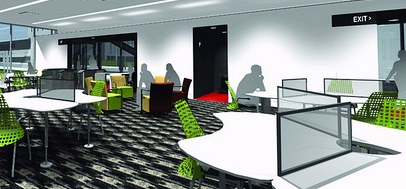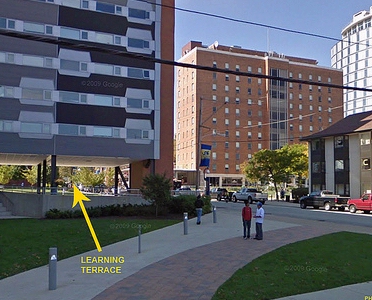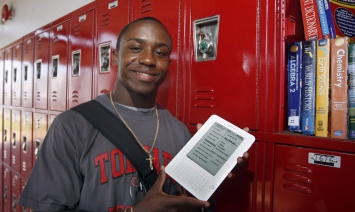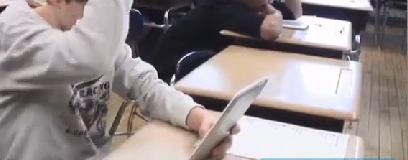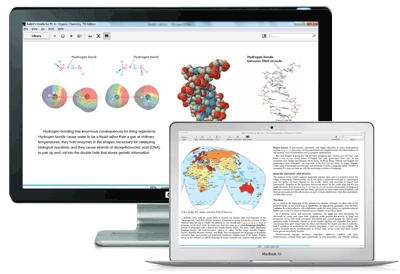
Those poor college students. I was visiting a campus at California State University, and the textbook prices at the student bookstore were expensive! One of the textbooks actually cost $138 (new), and while there was a cheaper used edition, it still cost over a hundred dollars!
But here’s the interesting part. The cheapest option — listed on a tag on the bookshelf — was not buying a printed book at all. College students can now rent their texts in ebook format. “They’re cheaper,” a college student behind the cash register explained to me. “But you only get them for a limited period of time.”
Amazon’s trying to help — or at least, to take advantage of the situation. Last week they launched a new service called “Kindle Texbook Rentals,” now promising savings of up to 80% over the cost of a printed text-book. And there’s an additional advantage that Amazon’s technology will make possible. “Normally, when you sell your print textbook at the end of the semester you lose all the margin notes and highlights you made as you were studying,” explained David Limp, vice president of Amazon’s Kindle department. “We’re extending our Whispersync technology so that you get to keep and access all of your notes and highlighted content in the Amazon Cloud, available anytime, anywhere – even after a rental expires!”
Amazon pro-rates the cost of your e-book based on how long you rent it — for a period that can be anywhere from 30 days to 360. “Tens of thousands of textbooks are available for the 2011 school year…” Amazon promised in their press release. And you don’t even need a Kindle in order to access the ebooks. Amazon will also deliver these ebooks to any of the free Kindle apps that are available — which includes Kindle apps for Mac and PC computers, as well as Apple products like the iPad, iPhone, and iPod Touch, and even the Windows Phone, Blackberry, and any Android-powered devices.
“Kindle Rental has the best prices,” concluded a textbook-comparison web site — but there were a couple of catches. First, Amazon only offered 18 of the top 100 college textbooks, according to CampusBooks.com. And even among those 18 textbooks, only five were available for the cheapest rental period. “Renting a Kindle book for the advertised 30-day period yielded the highest savings, often in the double-digits…” the web site explained in their press release, “but only five of 100 titles were available for the month-long range.”
“The other 13 titles available had minimum periods of 60 days, and the savings were less.”
And what happens if you wanted to rent your e-book for more than 60 days? “[I]f students were to rent via Kindle for a whole semester (120 days), only half of the time was Kindle Rental cheaper than buying and selling a used book.” Hopefully Amazon’s selection will grow as more students continue using it, but the ultimate judges will be actual students who are shopping for their college textbooks. On Tuesday CampusRentals.com tracked down an actual college student — a senior at Trinity College in Connecticut — who is currently giving Amazon’s new service a mixed review. “It’ll be great once they get more titles,” he told the web site.
“But for now, I’m stuck with other options.”
